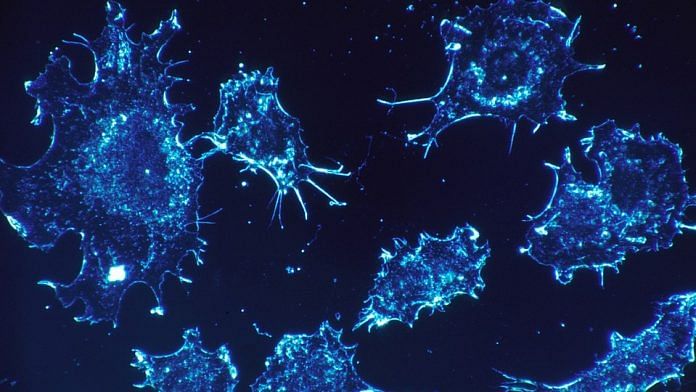New Delhi: Northern India has the highest incidence of melanoma, while nonmelanoma skin cancers are most prevalent in the Northeast region, particularly in Nagaland, according to a new Indian Council of Medical Research (ICMR) study.
Melanoma is a deadly skin cancer that develops from pigment-producing cells called melanocytes.
The study, published in the Journal of Cancer Research and Therapeutics, looked at data from 29 Population-Based Cancer Registry of India (PBCR) between 2012 to 2014.
For the study, the PBCRs in various parts across the country were divided into six regions — North (Delhi, Patiala), South (Bengaluru, Chennai, Kollam, Thiruvananthapuram), Central (Bhopal), East (Kolkata), Northeast (Cachar district, Kamrup urban, Manipur, Mizoram, Nagaland, Meghalaya, Sikkim and Tripura), and West (Mumbai, Nagpur, Pune, Ahmedabad and Barshi extended).
The data classified skin cancers broadly in two categories — melanoma and other skin cancers (nonmelanoma).
For the study, the team from ICMR’s National Institute of Cancer Prevention and Research looked at the region-wise incidence for melanoma and other skin cancers in both the sexes in each of the 29 registries.
In India, the incidence of melanoma of the skin in the North region is 1.62 for males and 1.21 for females for every 1,00,000 people.
The overall incidence of nonmelanoma skin cancer is the highest in the Northeast region, going as high as 5.14 for men and 3.98 for women for every 1,00,000 people.
This, however, is still much lower than the global melanoma incidence. In the Western Pacific region, the incidence is 36.9, while for the European region it is 31.7 for every 1,00,000 people.
The incidence of nonmelanoma skin cancer for males was highest in the East region at 6.2.
In the Western Pacific region, the incidence of nonmelanoma skin cancer is 225.4 among men and 68.6 among women.
The report points out that the skin cancer incidence in India is low in proportion to all other cancers in comparison with other regions of the world.
Also read: India’s cancer problem — not enough clinical trials and lack of access to those being done
UV radiation
The researchers said that previous studies have shown that genetic factors that make people more vulnerable to cancers caused by arsenic exposures played an important role in such cancers.
People in the Eastern region, along the Ganga and parts of North India are prone to arsenic exposure.
Meanwhile, exposure to ultraviolet B radiation is also linked to skin cancers. The skin types prevalent in the Northeast, along with high UV radiation in that area, can explain the higher incidence of skin cancers.
The increased melanoma incidence in Delhi does not seem to have any reasonable explanation. Researchers suspect that the high incidence in Delhi is simply a result of referral bias — that is more people with the disease have access to cancer hospitals and get admitted.
The researchers also suggest that men possibly have a higher incidence of skin cancer because they are more likely to have increased outdoor occupational activity and hence higher UV light exposure.
(Edited by Neha Mahajan)
Also read: Third of India’s cancer cases linked to tobacco use, nearly half in people over 60: ICMR report



